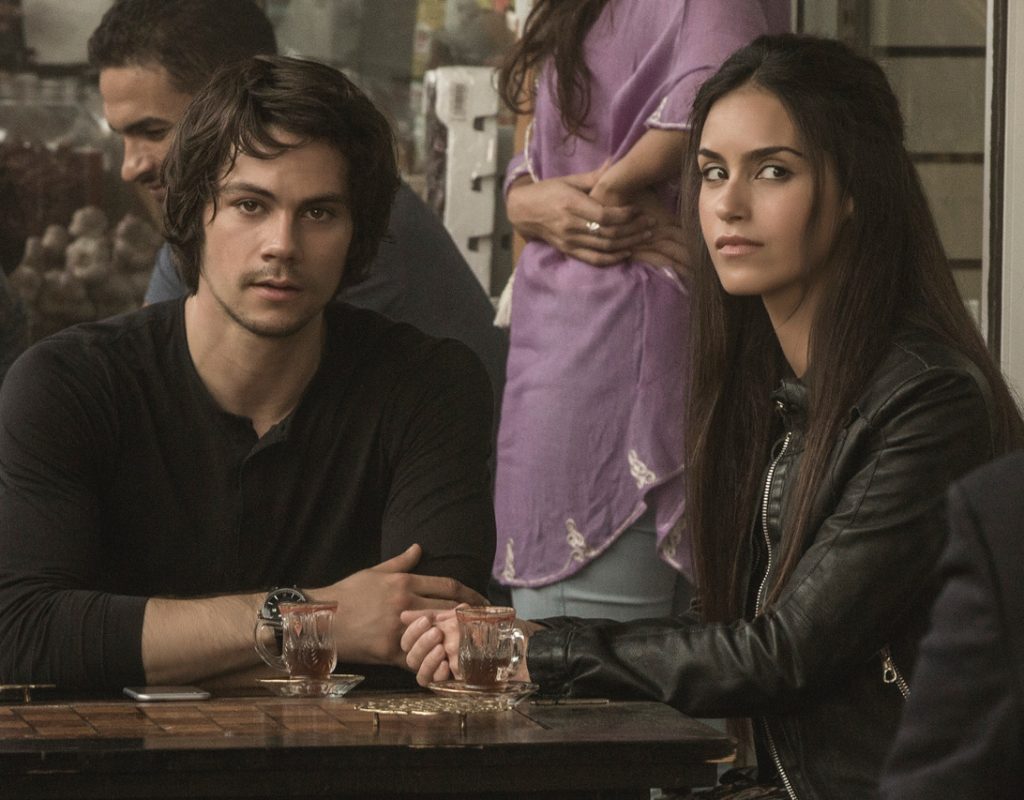Conrad Buff, ACE started his career as a VFX supervisor and editor at ILM on iconic movies like Star Wars Episode V: The Empire Strikes Back, Raiders of the Lost Ark, Poltergeist, E.T. the Extra-Terrestrial, Star Wars,: Episode VI – Return of the Jedi and Ghostbusters. He made his transition to the editor’s seat in 1985 and edited such films as Spaceballs, The Abyss, Terminator 2, True Lies, and Titanic, for which he won an Oscar for Best Editing with James Cameron and Richard Harris. Art of the Cut last interviewed him for The Huntsman: Winter’s War. We spoke to him about his most recent film, American Assassin.
HULLFISH: You’ve edited for a bunch of huge directors and you’ve edited for Antoine Fuqua several times – and, as a matter of fact, you’re cutting for him as we record this interview. What’s the advantage to working with somebody that you’ve done a bunch of films with?
BUFF: I think number one there’s just a comfortableness with having experienced each other before and then chemically clicking in a positive way and having on my end, freedom to sink or swim and try things. It’s a very comfortable natural communication. The first film I did with Antoine was Training Day and it was a pretty subjective process because it was reams of material. The actors spent a good amount of time in a tow car driving through the streets of L.A. So their energy would ebb and flow and there would be a good amount of experimentation on Denzel’s part particularly. So anyway that became successful and the experience was great. We just hit it off. I think that’s the same with any of the people I’ve had repeat business with.
HULLFISH: American Assassin’s a new director for you, right?
BUFF: Yes. Correct.
HULLFISH: What were some of the parts of trying to get in sync with him or to figure out how he likes to work or explain to him how you like to work. How did some of that relationship develop as that movie started?
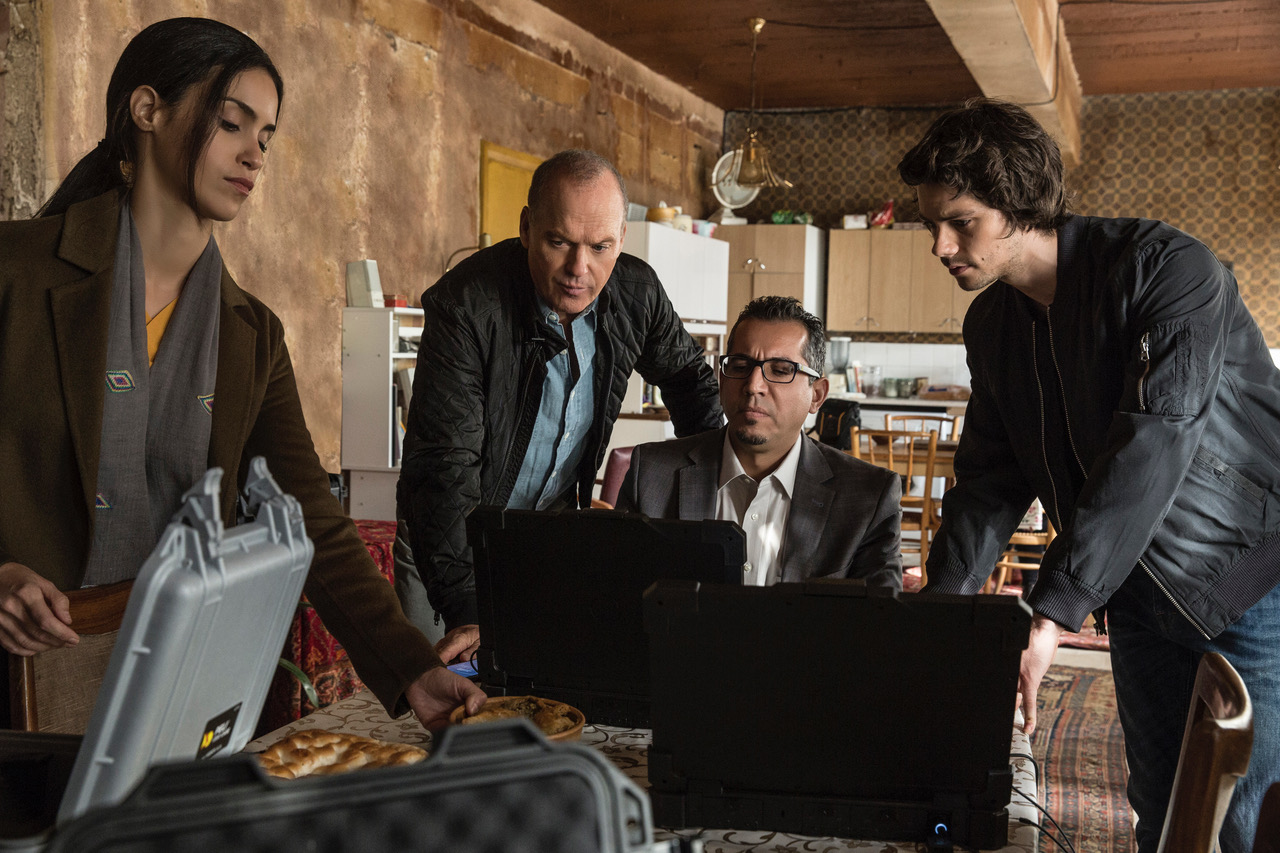
BUFF: Well Michael Cuesta, the director in question, was pretty busy every day. Very rarely had time to come to the cutting room. There were many distractions on the weekends. So the way we ended up communicating basically other than a phone call or me running over to the set to say hi but he rarely had the time to come over to editorial. But using PIX I could post cuts for him so he would be appraised of progress and performances. And if I had any issues communicating through his assistants or email or phone call if there was time, but there was also a reasonably busy second unit, that Vic Armstrong was directing. So it was great being on location being able to coordinate between the two units. Additionally, I had producers requesting things and popping into editorial maybe even more than the director while we were shooting.
HULLFISH: Is there a danger of having producers pop in? Do you feel like you need to protect the director in those instances in some way?
BUFF: I certainly want the director to be aware that somebody is popping in and what they’re going to see. And I would certainly want the director to see it first so he or she could put a disclaimer on it, that it’s the first draft on my part and has no input from the director. But I worked with the producer, Lorenzo di Bonaventura before, in fact, it was on Training Day that we first met. And so I knew Lorenzo and I knew that he would respect the relationship between director and editor. And he did, so he didn’t see things that Michael didn’t see first. But it was good periodically to have them come in and get enthused by what they saw. There were times also where main unit would shoot something and second unit was on the heels wanting to know what they needed to cover and in that case, I would have to produce a cut that probably quite a few people saw beyond the director so everybody was in sync and knew what they were getting. In fact one of the clips you sent me, the training sequence when Michael Keaton is teaching the boys with the knives in the forest, that was one of those instances I had to work on a weekend because main unit finished on a Friday and second unit were shooting on a Monday and everybody needed to know what they needed and the producers were concerned that it was properly covered etc. etc..
HULLFISH: And so in the instance of that one particular scene the main unit I’m assuming is shooting the Michael Keaton stuff, the stuff that’s more dramatic and then the second unit comes into maybe get some fight footage and stunt players?
BUFF: Yes exactly. Although remarkably the two leads in that, Dylan O’Brien and Scott were both pretty darn good at delivering remarkable looking stunts. So it’s definitely a marriage of first and second unit that’s pretty seamless. Second unit did a lot of the detail work and some of the wider shots where they were doubled.
HULLFISH: Can you talk to me a little bit about that scene specifically about either what some of the challenges were or what your considerations were while you’re editing it?
BUFF: I was actually impressed that the real actors were amazingly adept at doing things that you wouldn’t expect them to do.
HULLFISH: That’s a big help to an editor, right?
BUFF: Right. you don’t have to be concerned about masking or digitally replacing, covering up something, cutting away before you want to, that kind of thing. And that applied to that final fight in the boat sequence at the very end. Taylor Kitsch and Dylan O’Brien did almost everything in that sequence. There’s only an extremely limited number of shots that were stunt people. All the more remarkable to me because Dylan O’Brien had had a bad experience where he had been injured terribly on a previous film and the fact that he was willing to be so physical in this one was an interesting surprise to me.
HULLFISH: Talk to me a little bit about that stunt work. It’s one of the things that I just talked to Elizabeth Ronaldsdottir about who cut Atomic Blonde. She was really very forward about how much she discussed the scenes with the stunt choreographers.
BUFF: The blocking on this film, I really didn’t participate in the design of the fight sequences. There was basically a fight coordinator and then there was a second unit director and main unit, So all three were contributing. I was not involved in any preplanning other than receiving some sort of sketches from the fight coordinator that he had shot on video that indicated the blocking and the general idea where he was going to go, shot on an empty stage. So there was some sort of a template but it wasn’t something that I would follow. It only allowed me to see what the blocking was because the shots themselves and the action within the frame are going to dictate a completely different pattern and different requirements.
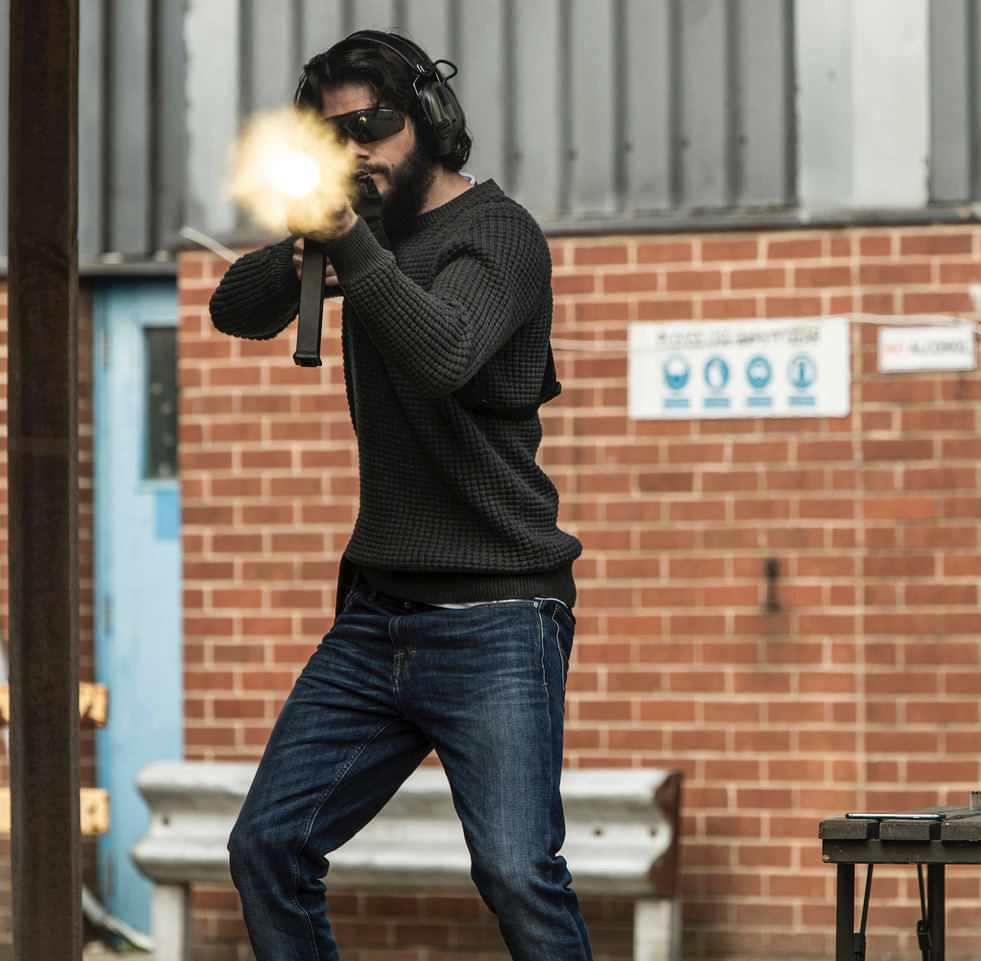
HULLFISH: I’ve only done one big action sequence like that, and the first cut was incredibly long.
BUFF: (Laughs) That happens.
HULLFISH: My question is that action sequences are not like a scripted dialogue scene where you say, “OK this person says this and this person says this and this person says this and they finish their conversation.” With a fight or action sequence, you get footage in and it doesn’t say “right hook then left hook then something else.” So how much are you being driven by either that template that you said you got earlier on, or just throwing it all out the window and looking at the dailies and just saying, “It doesn’t even matter as long as they start here and here?”
BUFF: Well there is a pattern to the coverage at least most of the time. There is a pattern to it. There’s a blocking that is set and rehearsed, practiced and how it’s covered varies frequently. It’s covered to death, all sizes, angles. Punches always need to be sold with the recipient of the punch is usually facing away from camera or blocked if you’re facing someone’s face and they’re receiving that punch the proximity of the fist to the face photographically looks like it’s connecting. Sound effects go a long way to selling things that wouldn’t necessarily be accepted visually when they’re silent.
HULLFISH: When you’re cutting, especially an action sequence or fight sequence, how much do you feel like you need to put sound effects in right then and there to maintain not just whether you can sell it properly but even the rhythm of it?
BUFF: I don’t worry about putting sound effects in right away. I cut it for visual impact. I want to make it as strong as possible and interesting and varied as possible. What I do find is that once I’ve established a cut, and if I have time to put the sound effects in, or if I don’t and I have to pass them on to the assistant to do it, frequently there are adjustments required because the sound does impact the visual considerably and it needs some slight modification to really make it work properly with the sound.
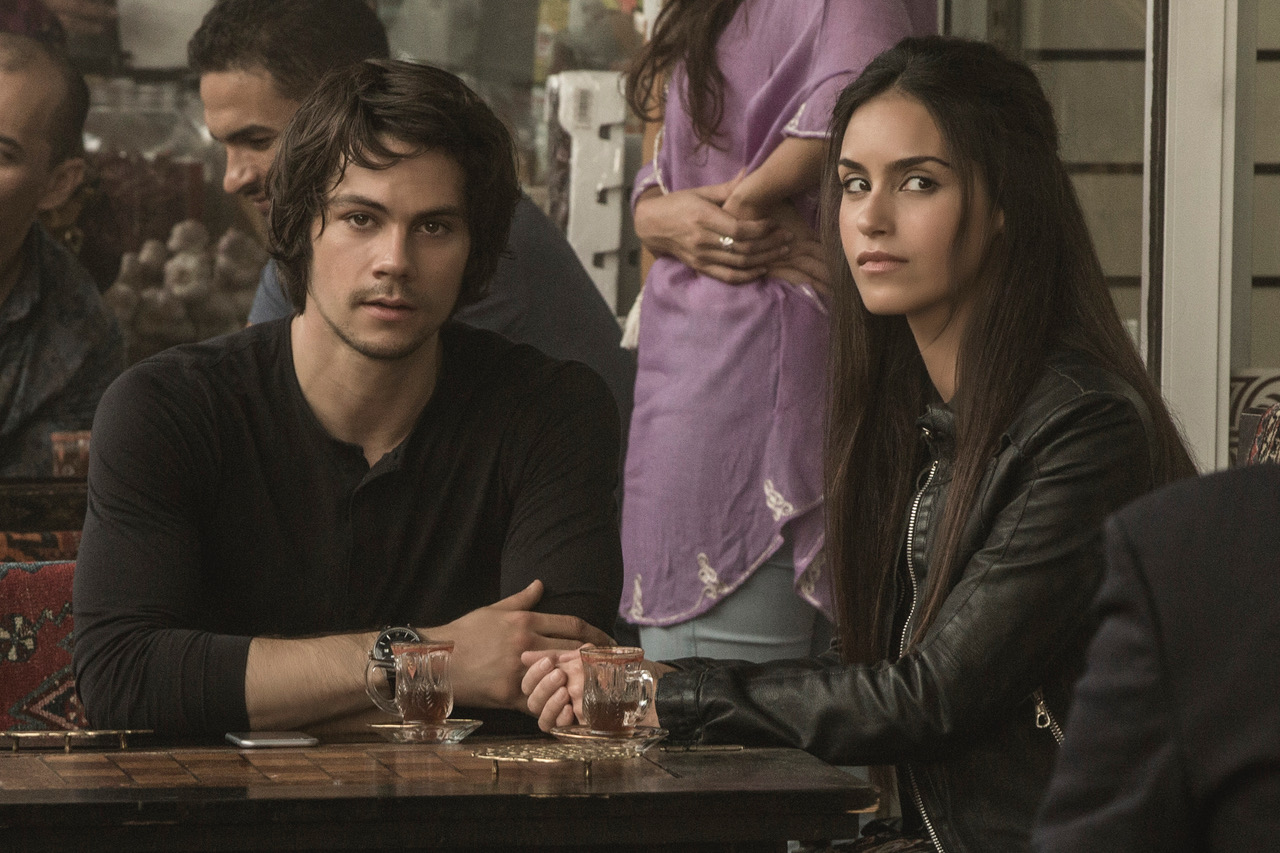
HULLFISH: When you’re cutting those do you bother with production sound at all, or is it distracting?
BUFF: Usually it’s a lot of grunts and a lot of vocalizations, very little impact of people hitting the ground or any kind of chest punch or leg kicks or anything like that. It’s a tough thing to get recorded. All of it requires audio sweetening.
HULLFISH: There were at least two places where I noticed pacing changes between very fast edited sequences going directly to slower edited sequences. One of them was between the fight scene in the forest and the following scene of the CIA talking in the embassy about nukes. And the other one was another fight sequence followed by the female agent gently cleaning Mitch’s wounds in a hotel room.
BUFF: Well, in the first case, the fight scene with the knife, the training sequence, that originally lived in a different position that was later in the film. But quite late in the game after a preview or two we realized that the training sequences were well liked by the audience. So structurally it was advanced just to get the ball rolling sooner. Script-wise, it was not written that way, but I think the latter scenes you’re referring to were structured on the page the way they are in the film. The way Michael shot that nursing — tending to Mitch’s wounds — was very simple.
HULLFISH: Did you find that you tried to create these tempo changes or that that’s some way satisfying to you to have these kinds of musical ebbs and flows.
BUFF: I think it’s a function of writing more than anything really. It depends on the structure of the script.
HULLFISH: Do you want to talk about temp music?
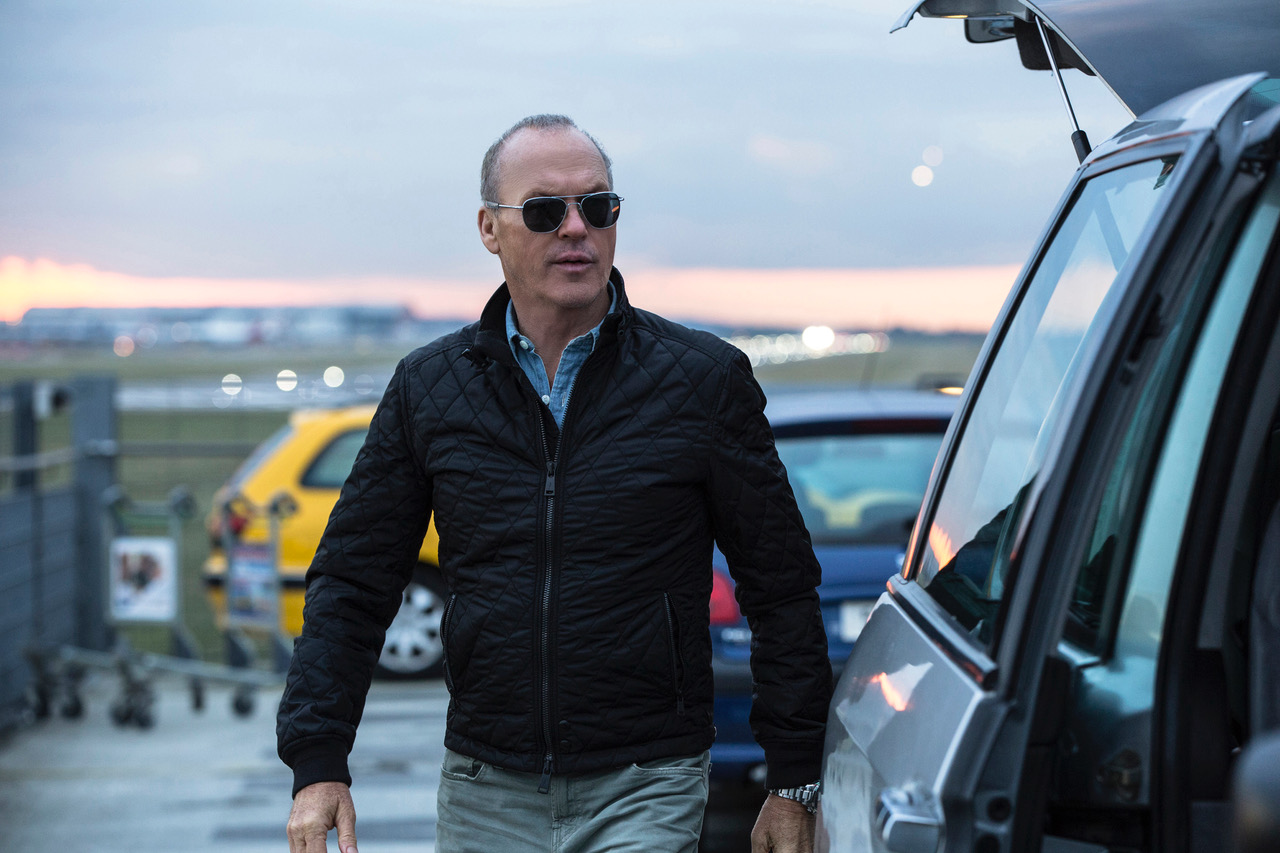 BUFF: I told Michael that I had my hands full on this all in terms of the volume of material and the two units, main and second. I told him that I didn’t really want to put time in putting in temp music, in order to sell scenes. I wanted the scenes to stand on their own. And he was delighted to hear that. In a previous experience, he watched the editor’s cuts and there was a lot of music that he didn’t care for. I think that just clouds perception. I would rather keep things as straightforward as possible unless the director has something specific he wants to try. These days I’m just really shying away from throwing that stuff in because to me the final structure is so far away. I can put in something that will help sell a scene but it’s too seductive. You can make anything work if you add score. But structurally it may not ultimately want score. It may work better in context as a dry scene. But if you’re so used to hearing a certain cue for having music at all you find it odd when you’re not watching it with it. I just think it’s too seductive. There are times where if you are doing a montage or something you might need something to drive it. But more and more I just shy away from it. I have ideas and I listen to things that I think might be appropriate but unless it’s demanded or if I have to show some scenes to the studio then I might reconsider and put something in. But most of the American Assassin was dry. Once the shooting finished we brought a music editor in. I gave her reels and I gave her some instructions. Michael talked to her and she just ran with the ball. I just would rather spend time on performance structure.
BUFF: I told Michael that I had my hands full on this all in terms of the volume of material and the two units, main and second. I told him that I didn’t really want to put time in putting in temp music, in order to sell scenes. I wanted the scenes to stand on their own. And he was delighted to hear that. In a previous experience, he watched the editor’s cuts and there was a lot of music that he didn’t care for. I think that just clouds perception. I would rather keep things as straightforward as possible unless the director has something specific he wants to try. These days I’m just really shying away from throwing that stuff in because to me the final structure is so far away. I can put in something that will help sell a scene but it’s too seductive. You can make anything work if you add score. But structurally it may not ultimately want score. It may work better in context as a dry scene. But if you’re so used to hearing a certain cue for having music at all you find it odd when you’re not watching it with it. I just think it’s too seductive. There are times where if you are doing a montage or something you might need something to drive it. But more and more I just shy away from it. I have ideas and I listen to things that I think might be appropriate but unless it’s demanded or if I have to show some scenes to the studio then I might reconsider and put something in. But most of the American Assassin was dry. Once the shooting finished we brought a music editor in. I gave her reels and I gave her some instructions. Michael talked to her and she just ran with the ball. I just would rather spend time on performance structure.
HULLFISH: Speaking of structure, let’s talk about transitions. There are a couple of places where you’re dealing with intercutting an A, B and a C story. What were some of the considerations when you were going through those sections about where to come back and forth or did they stick really close to the script?
BUFF: I think there was some experimentation early on of restructuring either scenes or parts of scenes. My first cut was obviously honoring the script but I think ultimately we found that for the most part, the script structure worked. We actually undid some of the experiments of breaking up scenes and intercutting. A much more linear approach ultimately.
HULLFISH: What about the intercutting from the various A and B stories at the end of the film?
BUFF: There were a lot of parallel scenes and all of that was broken up a little differently than what was originally written. And then the whole last part of the third act with the Navy, there was a late shooting requirement in order to get the Navy’s cooperation. They had to write a new draft for the part that contained their story and their participation on the show. And it turned out to be a real mess. It was so lethargic, trying to be so technically correct in honoring the accuracy of how the Navy would handle things. Dramatically, it just put you to sleep. So there was a lot of reconstruction in that area.
HULLFISH: What were you dealing with to be able to try to get the pacing of the editing in that very effects-heavy section?
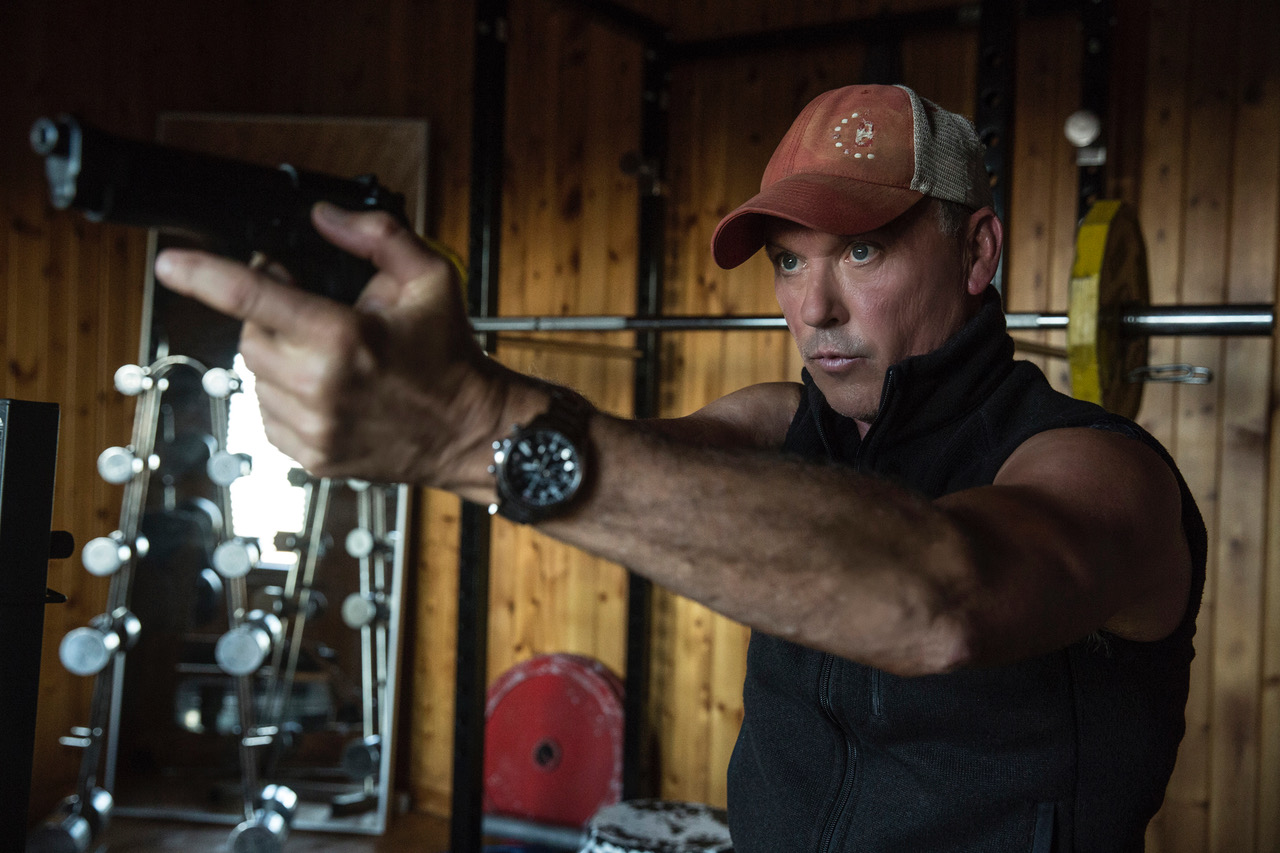
BUFF: Storyboards originally, then pre-viz was made. We all participated in that but then the pre-viz itself needed to be opened up. Basically, the pre-viz didn’t incorporate the reactions of the Navy or Mitch… the helicopter, the pilots, all that sort of thing. So I used storyboards initially and then pre-viz once they got it. The pre-viz gave us the shots that we needed to commit to financially. So we knew what the duration of them would be. It was up to me to place them.
HULLFISH: I’m assuming that VFX have changed significantly from back when you worked on Star Wars.
BUFF: (laughs) Yeah!
HULLFISH: Does that experience of working as a VFX editor on films like Star Wars and Raiders of the Lost Ark and E.T. and Ghostbusters – does that help you as the picture editor on a film like American Assassin?
BUFF: I do have a very good understanding of how things work and what the requirements are and what the timetable is and what the demands are and the accuracy of what you need to turn over and honoring the shots and sequences in an economic sense. And I know what to expect and how to interpret things when they come in. I can pre-visualize things pretty well and get a good sense of timing even with just a storyboard. So having that background was helpful. That was kind of my detour to get into feature film editing. I’d worked in commercials for quite a few years before ILM.
HULLFISH: What kind of discussions between you and Michael Cuesta went on before he got involved in the shoot, in other words, what did he tell you he was after or what kind of discussions led you to know you were making the right choices or that you two were on the same page?
BUFF: He and I had a very long Skype call, that was our introduction to each other. He was in New York and I was in California and we talked for an hour and a half. But when I got to London it was right before they began shooting. So there was no real time to have much of a discussion. We had dinner together one night. I could really tell what he wanted just when I received dailies and I’d listen to him talk with the actors between takes I mean there’s a certain osmosis to all of this. You react to what you like and you hope that the director is going to like what you like. I find that the most freeing thing is to stop worrying about what you think a director’s going to like and just worry about what you like and what you react to. You glean so much from just watching the material of tone, color and what their taste is and the developments from take to take.
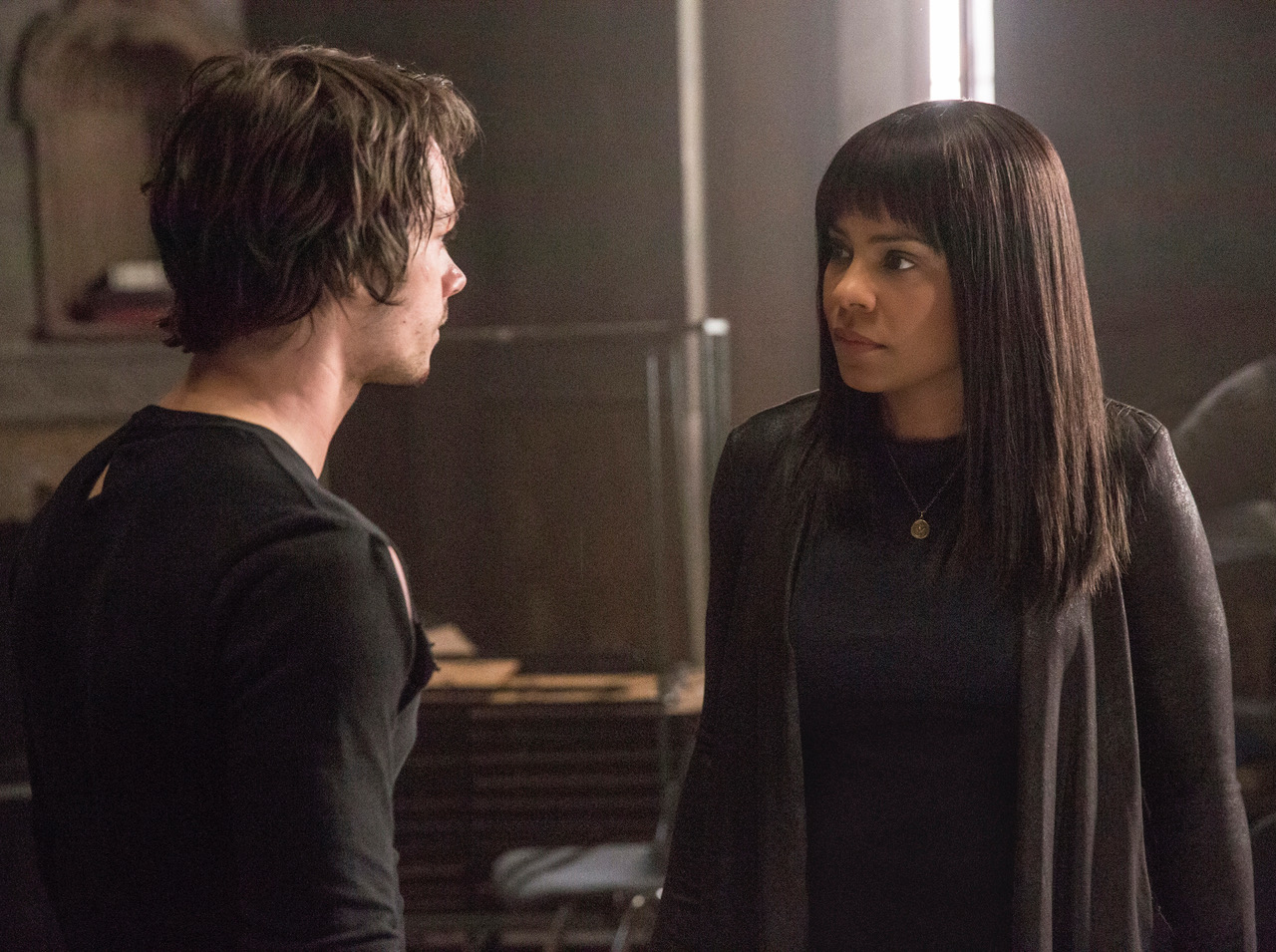
HULLFISH: Many people have talked about that approach to a scene. For some people, they like to watch the set-ups and takes of a scene backward. But many people like you have said there’s so much to be derived from seeing the progression of takes.
BUFF: Yeah, the evolution, and what changes and notes there are from shot to shot even if you don’t have the opportunity to hear anybody discussing between set-ups, you can see the subtleties and differences from take to take.
HULLFISH: Conrad, thank you so much for your time today. Good luck to you and Antoine on your current film.
BUFF: Alright man, thanks. Take care. Bye
This interview was transcribed using SpeedScriber. (Transcribed in under 10 minutes with no wait for a transcriptionist.)
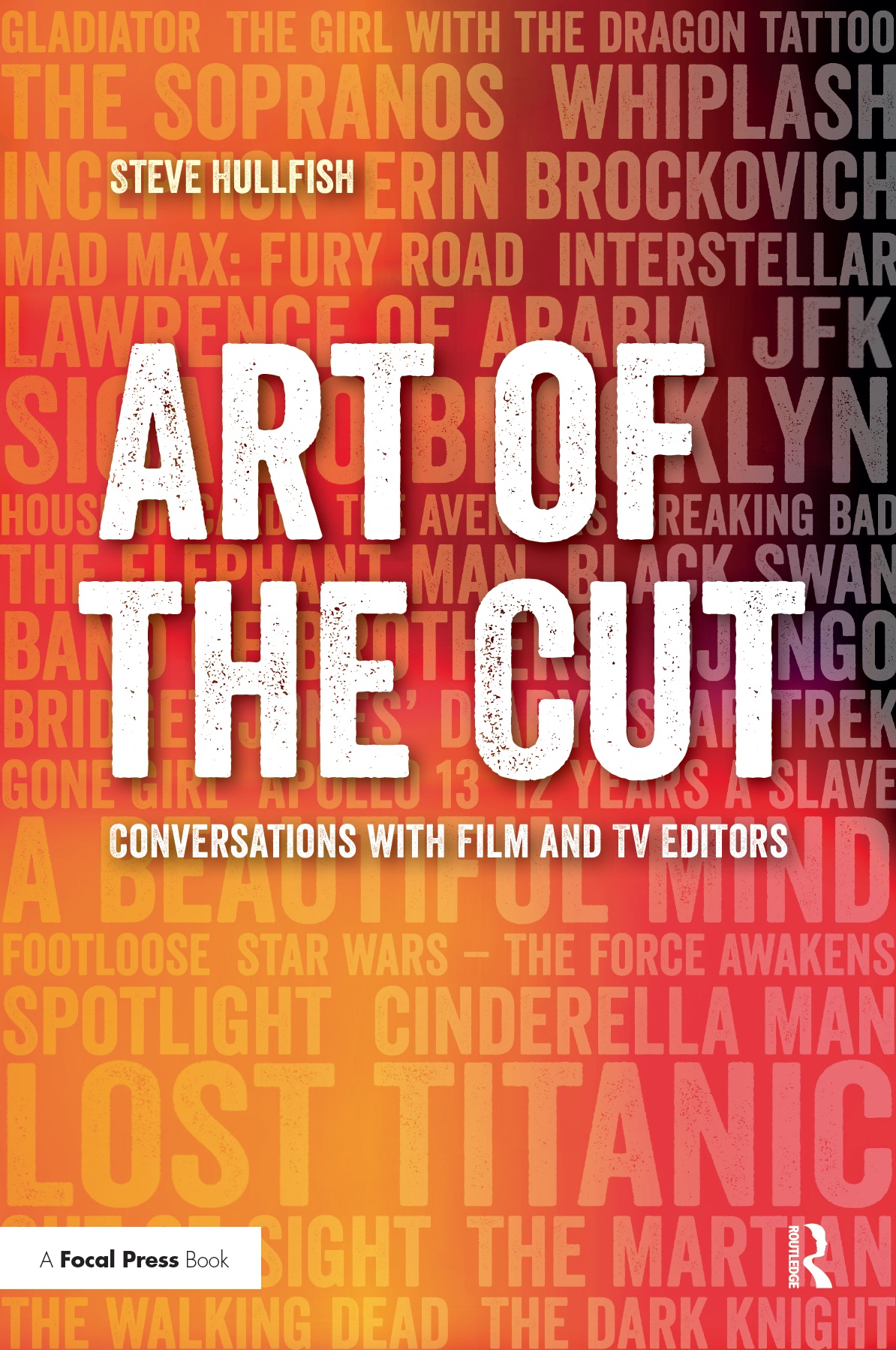 To read more interviews in the Art of the Cut series, check out THIS LINK and follow me on Twitter @stevehullfish
To read more interviews in the Art of the Cut series, check out THIS LINK and follow me on Twitter @stevehullfish
The first 50 interviews in the series provided the material for the book, “Art of the Cut: Conversations with Film and TV Editors.” This is a unique book that breaks down interviews with many of the world’s best editors and organizes it into a virtual roundtable discussion centering on the topics editors care about. It is a powerful tool for experienced and aspiring editors alike. Cinemontage and CinemaEditor magazine both gave it rave reviews. No other book provides the breadth of opinion and experience. Combined, the editors featured in the book have edited for over 1,000 years on many of the most iconic, critically acclaimed and biggest box office hits in the history of cinema.

Filmtools
Filmmakers go-to destination for pre-production, production & post production equipment!
Shop Now